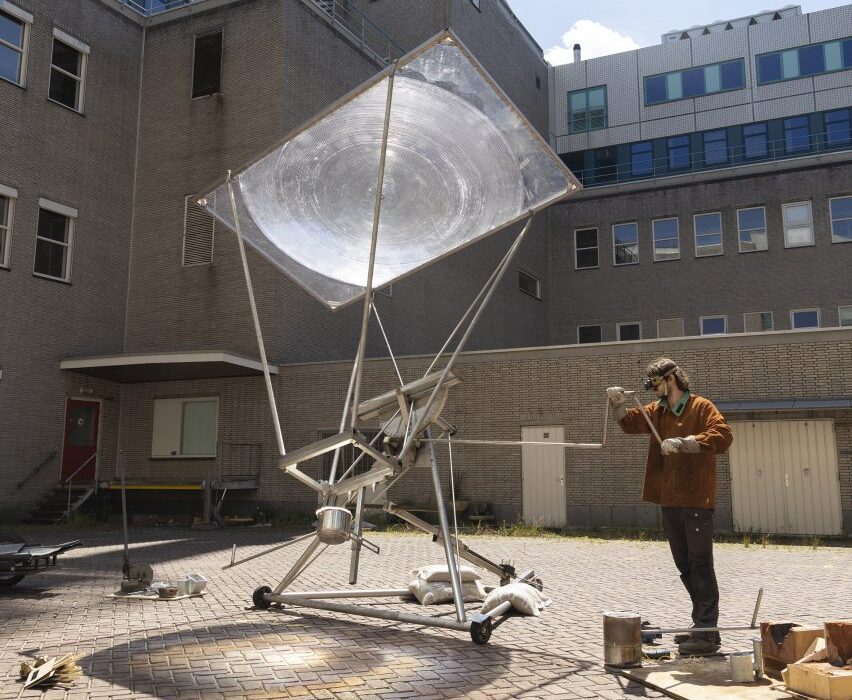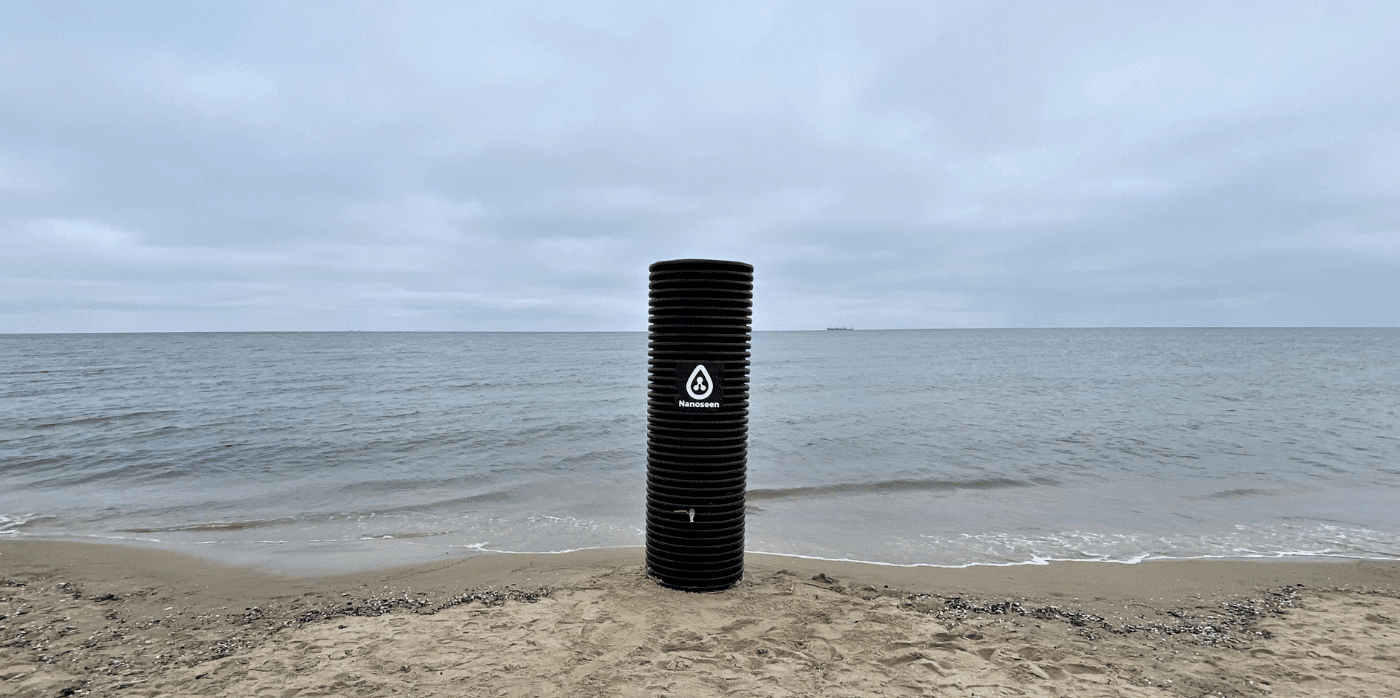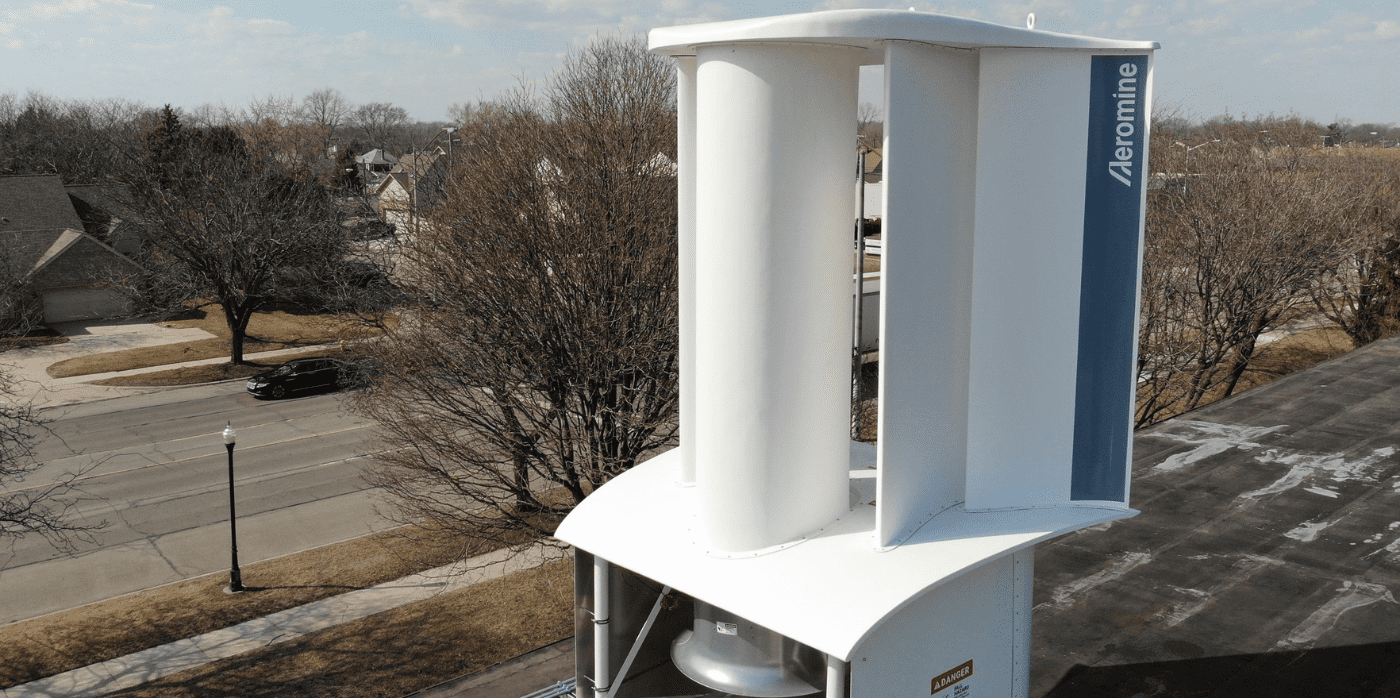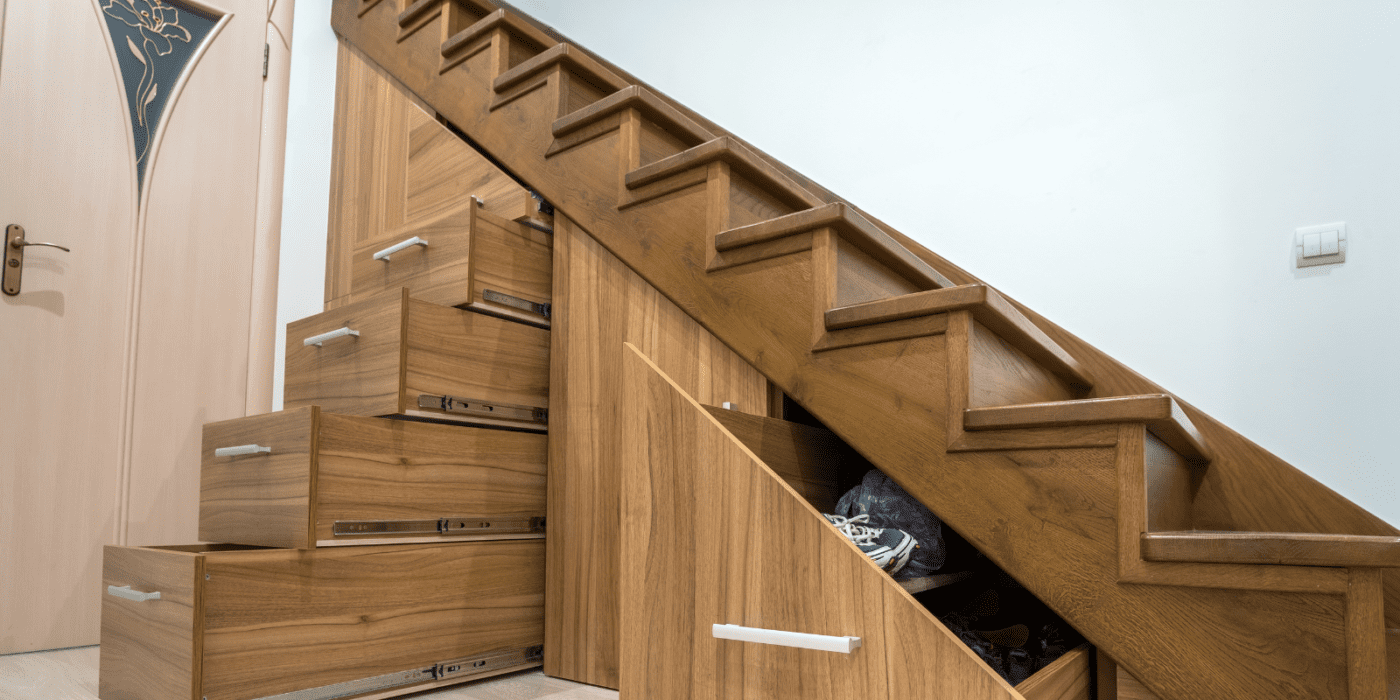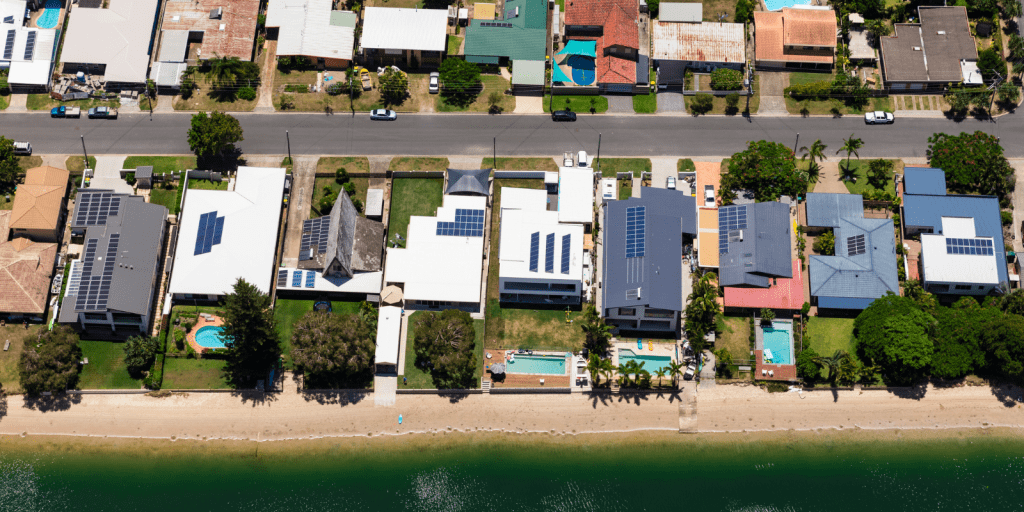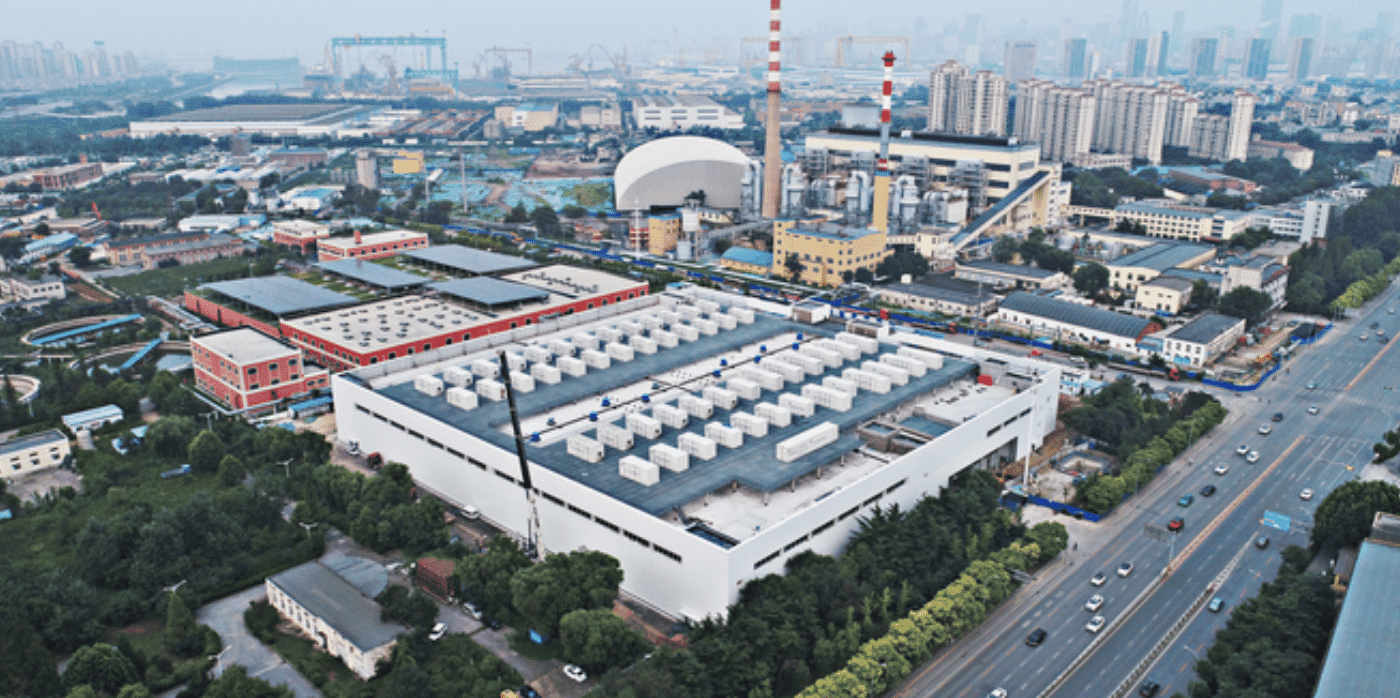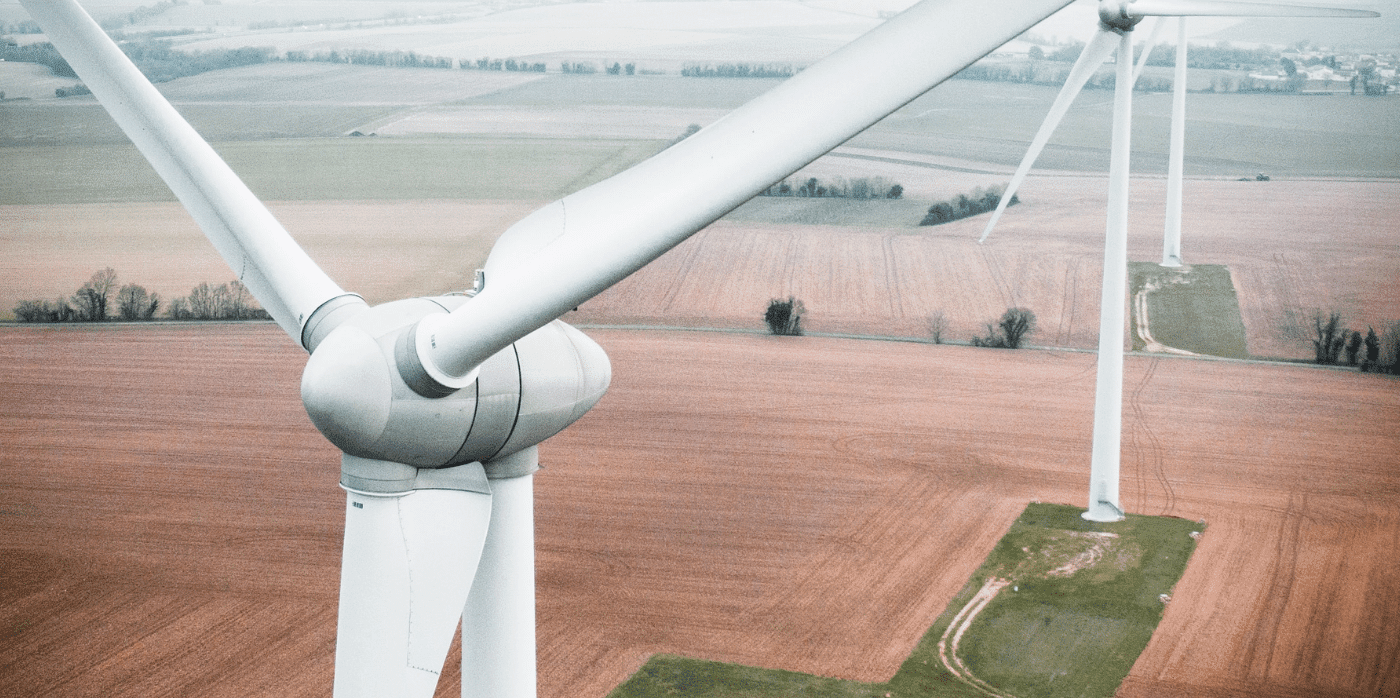Dezeen’s top 10 designs from 2022 that rethought how we use energy
As the global energy crisis shone a light on fossil-fuel dependence this year, we continue our review of 2022 by looking at 10 of the most innovative projects demonstrating more renewable, efficient and affordable ways to power our lives.
After Russia’s war in Ukraine sent energy costs spiralling to record heights, designers and architects argued that now is the time to double down on the renewable energy transition.
“This is a pivotal moment in which we need to shift our societies onto a safer path,” architect Michael Pawlyn told Dezeen earlier this year.
From a sand battery to a portable wind turbine and a low-cost solar-heated blanket, here are 10 projects covered on Dezeen in 2022 that demonstrate how it can be done:
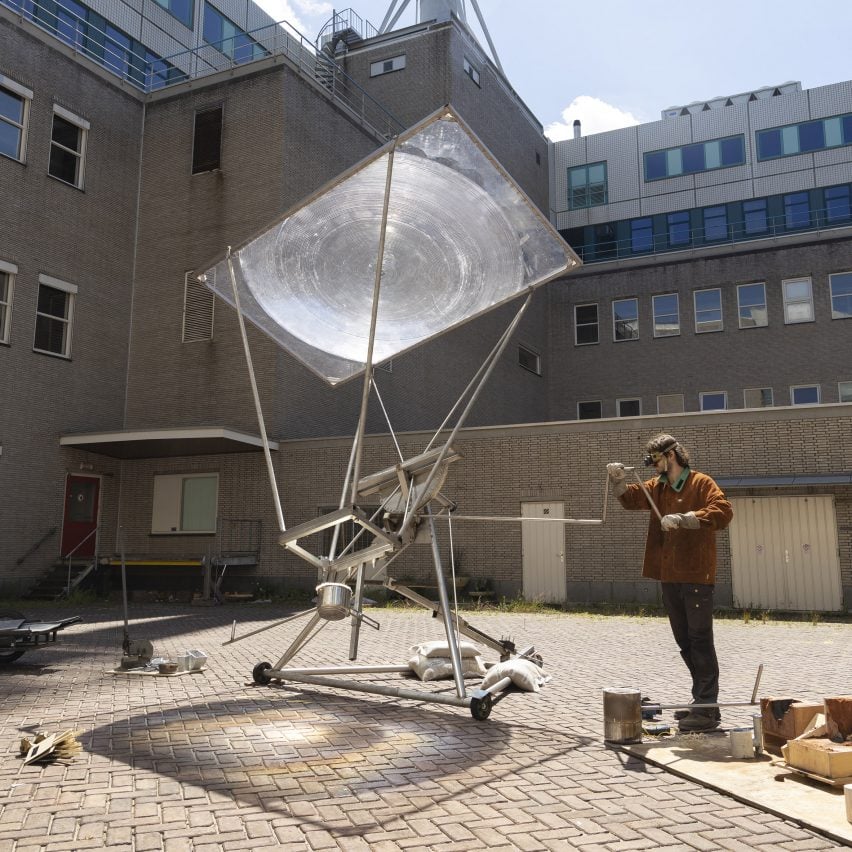
Solar Metal Smelter by Jelle Seegers
An oversized magnifying glass focuses the sun’s heat to melt metal in this smelting machine, developed by design graduate Jelle Seegers to reduce the emissions and soaring energy costs associated with powering industrial furnaces.
“By making this thing manual, it really changes the casting craft from one where you just have endless energy coming into your workshop to one where you personally cooperate with the sun in order to melt the metal,” he told Dezeen.
Find out more about Solar Metal Smelter ›

Sweat-powered biofilm by the University of Massachusetts Amherst
Researchers from the University of Massachusetts Amherst have developed a biofilm that is worn like a plaster and can generate electricity to power users’ wearable electronics using their sweat.
The film is made by bacteria that can convert energy from the sweat’s evaporation into electricity, meaning that compared to traditional batteries it does not need to be changed or charged while cutting down the need for mined metals.
In the future, researchers believe the technology could be used to power devices at a larger scale as around 50 per cent of all solar energy that reaches Earth is spent on evaporation, making it a “huge, untapped source of energy”.
Find out more about the biofilm ›
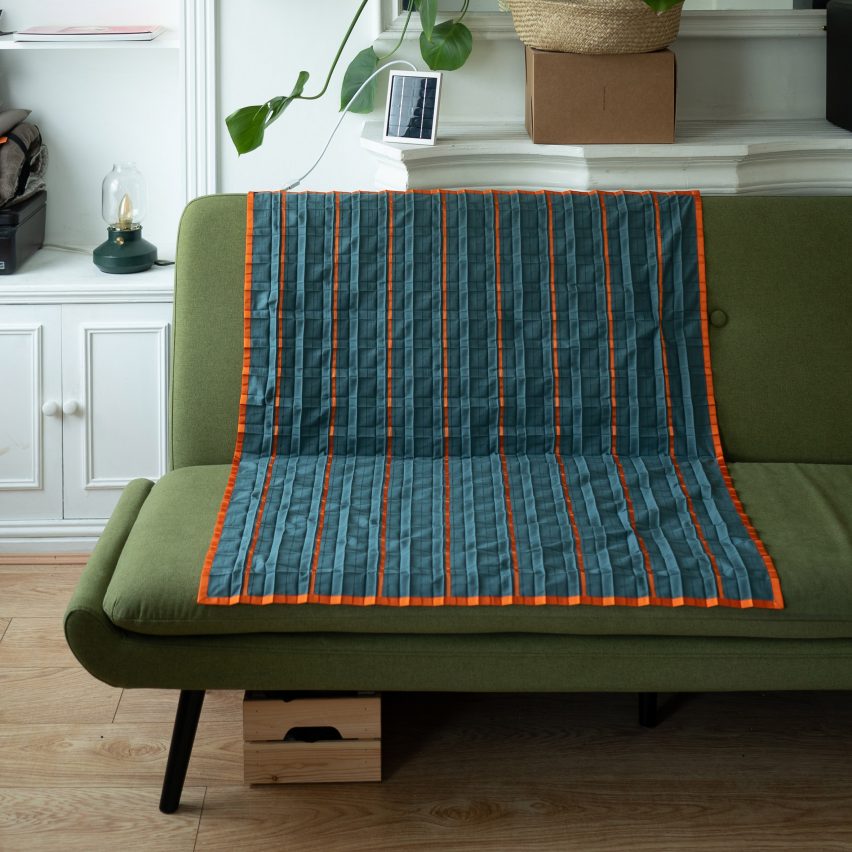
Solar Blanket by Mireille Steinhage
Conductive yarn runs through this heated blanket, which can be charged using a mini solar panel to provide an accessible and affordable way to stay warm over the winter in the face of the energy crisis.
Designer Mireille Steinhage estimates the Solar Blanket could retail for less than £10 and, unlike a gas-powered boiler, would not cost anything to run.
“The emphasis on personal responsibility when it comes to sustainability is big,” said Steinhage. “However, it’s not so simple for the reported 14.5 million people living in relative poverty in the UK.”
“These people might not be able to make sustainability a personal priority, even if they wanted to,” she continued. “If we want to realise a more sustainable future, being sustainable should be accessible to everyone.”
Find out more about Solar Blanket ›
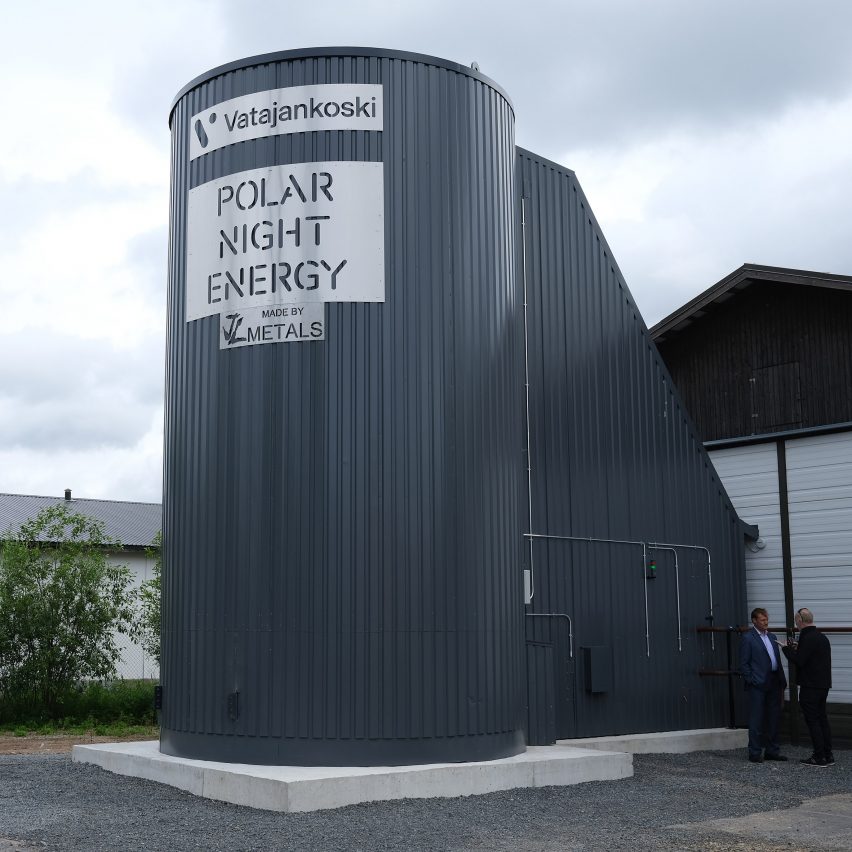
Sand battery, Finland, by Polar Night Energy
This year saw Finnish company Polar Night Energy install the world’s first operational “sand battery” at a power plant in the town of Kankaanpää, which promises to overcome one of the key obstacles to the renewable energy transition.
It works by transforming green energy into hot air using a resistive heating element and then feeding it into the sand, heating it to around 500 to 600 degrees Celsius.
The sand is able to retain that heat for weeks or even months, offering a long-term, low-cost solution for storing excess renewable energy for those times when the sun isn’t shining or the wind isn’t blowing – particularly for winter when demand is at its peak in many places.
Find out more about the sand battery ›
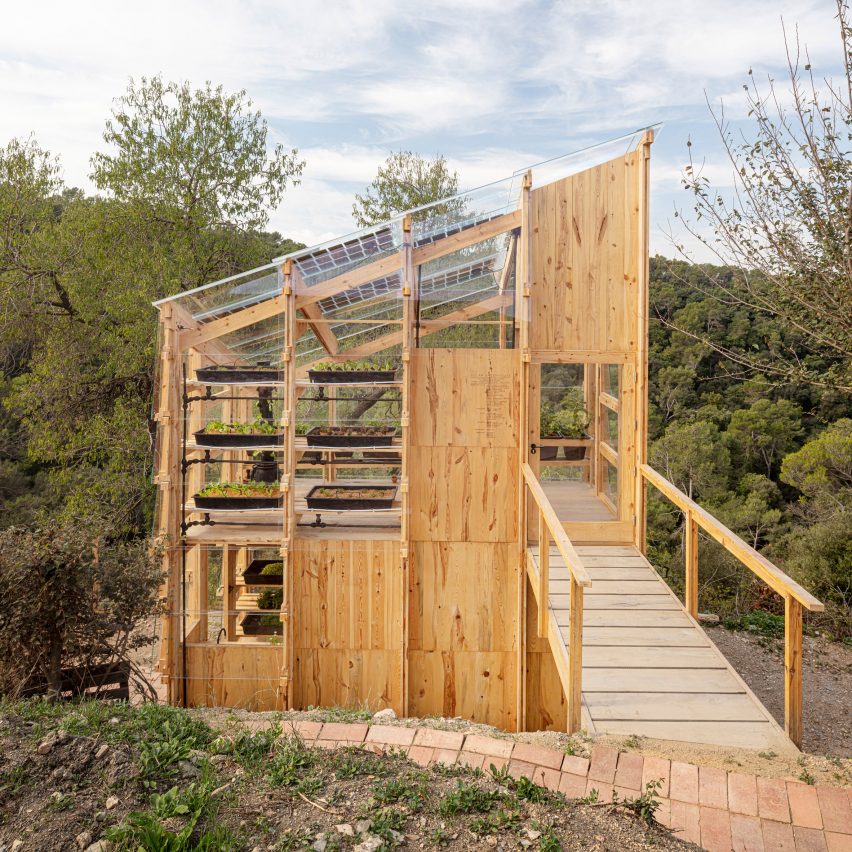
Solar Greenhouse by the Institute for Advanced Architecture of Catalonia
This prototype Solar Greenhouse co-locates renewable energy generation and food production on the same plot of land, in a bid to demonstrate how the world could feed its growing population while racing to reach net-zero emissions by 2050.
The two-storey structure is made from locally sourced timber, wrapped in glass louvres for light and ventilation, and designed to be scalable and adaptable to a variety of settings including inner-city rooftops.
Find out more about Solar Greenhouse ›
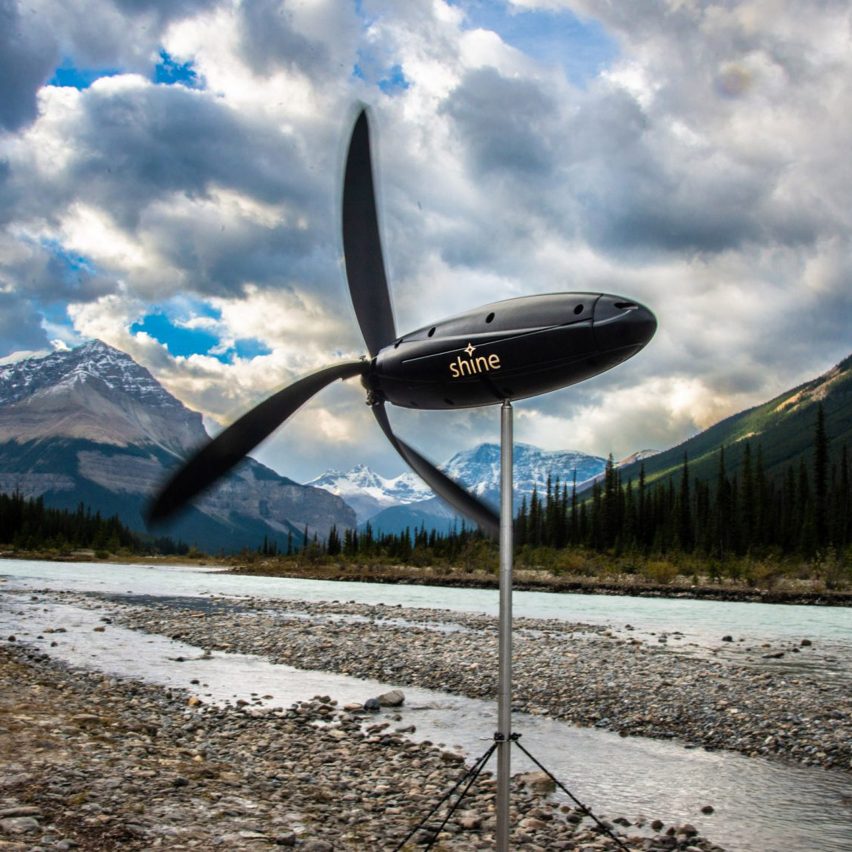
Shine Turbine by Aurea Technologies
This portable wind turbine folds down to the size of a water bottle so it can fit in a backpack for camping trips or emergency situations.
It can generate up to three phone charges worth of power in an hour, with a power-to-weight ratio of 29.5 watts per kilogram that makes it more efficient than any comparable solar panels, thermoelectric stoves or water turbines, according to Aurea Technologies.
Find out more about Shine Turbine ›
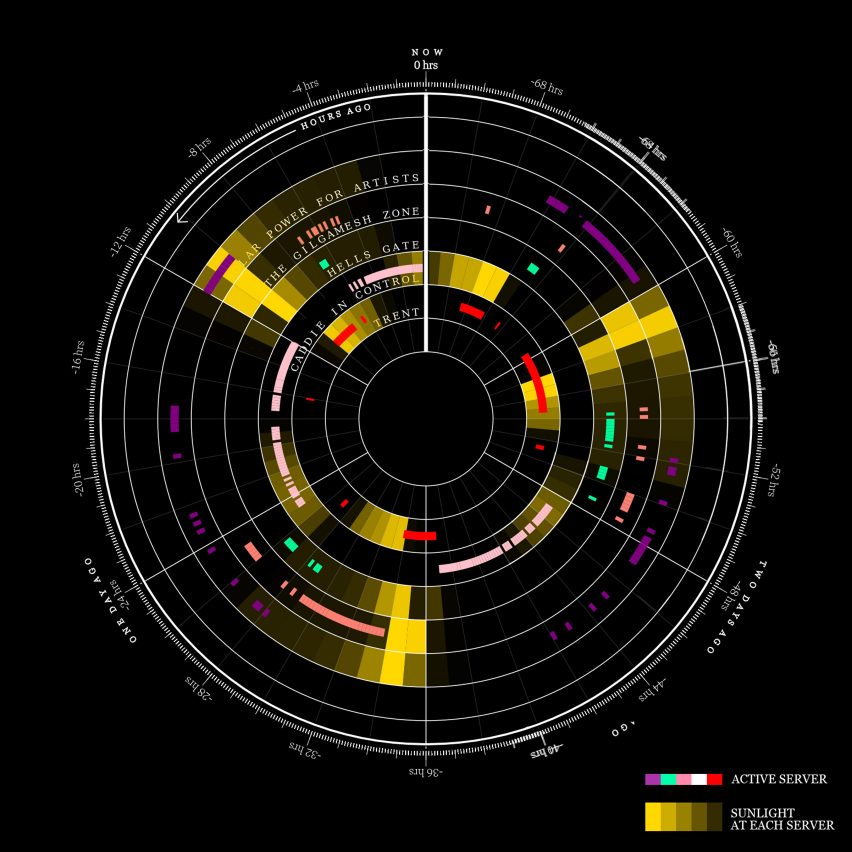
Solar Protocol by Tega Brain, Alex Nathanson and Benedetta Piantella
Websites on the Solar Protocol network are serviced by solar-powered servers placed in different time zones around the world to make use of the most naturally available energy at any given time.
The project hopes to provoke discussions about whether the internet can function within planetary limits.
“In the field of computer science, there’s always been this idea of computing being unlimited and infinite,” co-creator Tega Brain told Dezeen. “There’s not a culture of considering the material impacts and the fact that these systems are reliant on giant energy-sucking, water-sucking data centres that are all around the world.”
Find out more about Solar Protocol ›
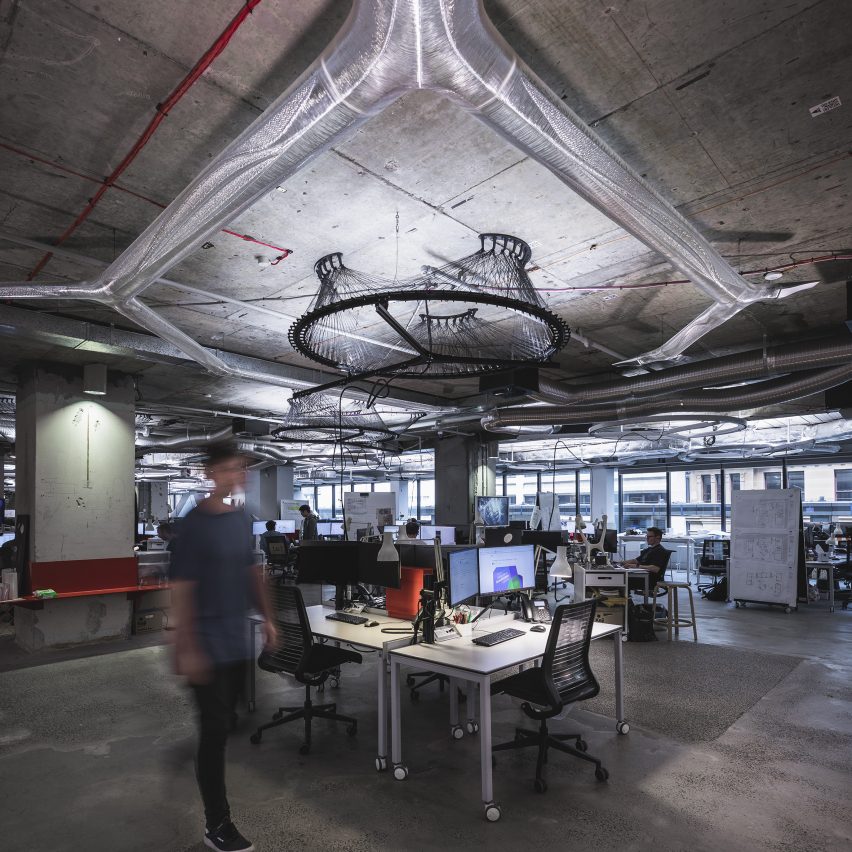
Systems Reef 2 by BVN and the University of Technology Sydney
Australian architecture practice BVN collaborated with the University of Technology Sydney to create a 3D-printed air-conditioning (AC) system dotted with tiny pores that effectively mist cool air into the space below, mimicking frog skin.
Combined with swapping the traditional angular sheet metal construction of ACs for a more aerodynamic network of branching tubes, this means the system uses less energy in operation and reduces embodied carbon by 90 per cent.
Find out more about Systems Reef 2 ›

Lightyear 0 by Lightyear
This year saw Dutch startup Lightyear launch the “world’s first production-ready” solar car, which has photovoltaic panels integrated into its roof, bonnet and boot that automatically top up its battery.
The hope is that this will help electric cars rival their fossil-fuel counterparts by making them less reliant on charging points and potentially free to run.
“I think most electric vehicles will have a solar roof in the future,” Lightyear’s lead solar engineer told Dezeen in an exclusive interview. “It’s a topic that all big car manufacturers are working on.”
Find out more about Lightyear 0 ›
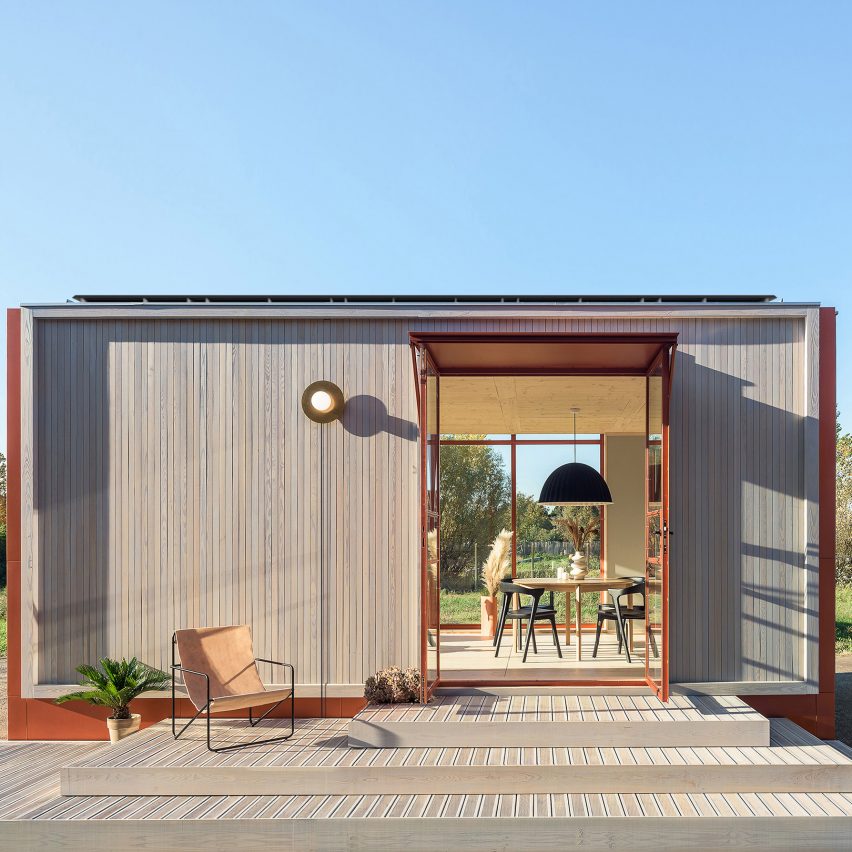
Cosmic Studio by Cosmic
In a bid to make zero-emissions, off-grid living more accessible, US startup Cosmic developed a modular accessory dwelling unit that can be slotted onto any property and generates all of its own energy with no need for fossil fuels.
The tiny home is constructed using an efficient “hybrid prefab” construction system and powered via an integrated rooftop solar array plus an air-source heat pump that takes care of heating and cooling.
Find out more about Cosmic Studio ›

